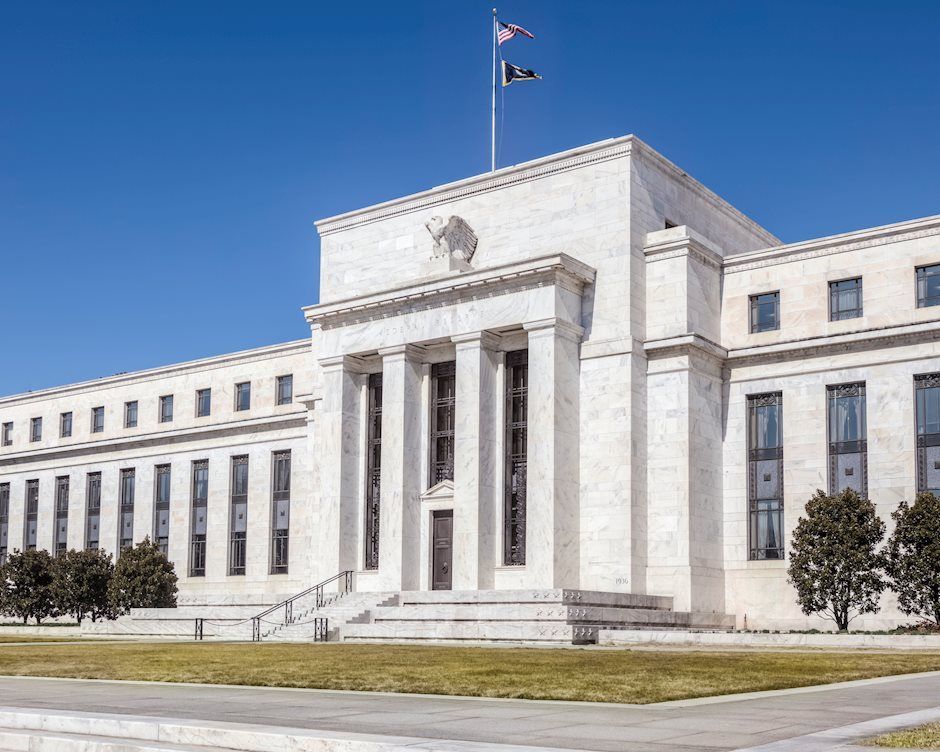The Fed is universally expected to pause, which is one way of keeping all its options open

Outlook: Half of the world’s big-economy central banks meet this week, including the US on Wednesday, the UK on Thursday and Japan on Friday. Some EM central banks also meet, including Turkey and S. Africa.
The Fed is universally expected to pause, which is one way of keeping all its options open. The press likes to call this a “hawkish hold.” The market eagerly awaits a new quarterly dot-plot. Goldman Sachs analysts expect the Fed to pause in November, too. This may be logical, given that several factors are pushing or may start pushing against economic growth, including the autoworkers strike and in October, the resumption of student loan repayments and a government shutdown if the House can’t get its act together.
Then there is the Bank of England, which has to bite the bullet. Traders expect a hike on Thursday but a hint that this will be the last one. Unhappily, the UK releases CPI the day before on Wednesday, with no respite in sight. Headline CPI is forecast to rise to 7.1% from 6.8% in July.
Finally, the Bank of Japan may or may not make a policy change under new Gov Ueda. Most expect a delay until later in the year, but you never know. The yen is a good one to avoid for a while—it will chop all over the place.
About all the central banks, Reuters notes “While 'core' inflation rates excluding energy prices are what policymakers look to most closely for clues to sustained price pressures, higher energy costs seep into all price-setting processes and household demand calculations and are critical to inflation expectations.” Commentators who say the price of oil doesn’t matter are full of it.
Going into a slow day, we see that Bloomberg is impressed by the Commitments of Traders report, which shows “Hedge funds have turned bullish on the dollar for the first time since March as speculation builds that Federal Reserve policymakers will retain a hawkish bias when they meet this week.
“Leveraged funds and other major players held a combined 18,000 net long positions on the dollar across eight major peers in the week ended Sept. 12, versus 25,175 net shorts the week before, Commodity Futures Trading Commission data show. The switch was driven by the biggest slide in euro longs since January as traders bet the European Central Bank is about done raising interest rates.
Brown Bros analyst Win Thin is cited: “We expect a hawkish hold from the Fed this week that leaves the door open for further tightening. On the other hand, virtually every other major central bank that’s meeting this week is expected to follow in the ECB’s footsteps and hike rates 25 basis points whilst signaling a peak is near.”
We have been saying all along that we need to believe Mr. Powell when he says “higher for longer,” and blew raspberries at those forecasting the first rate cut in March or June. Now comes vindication in the form of a FT poll of economists, nearly half of whom expect at least one more hike (and maybe more). The market doesn’t buy it and expects the Fed is done but will keep rates on hold well into 2024.
But the poll “suggests that fully rooting out price pressures and getting inflation back down to 2 per cent will require more prohibitive borrowing costs than market participants currently anticipate.” Some sectors are not feeling the pinch (housing is stil surprisingly strong) and the consumer is not pulling back.
Here’s the poll data: of 40 respondents, 90% “believe the Fed has more work to do. Nearly half of the economists surveyed forecast the fed funds rate would peak at 5.5-5.75 per cent, indicating one more quarter-point rate rise. Another 35 per cent expect the Fed to move two more quarter-point notches, pushing the benchmark rate to 5.75-6 per cent. A small cohort — 8 per cent — think the policy rate will top 6 per cent.”
Here’s the kicker: “Once rates peak, the economists surveyed were overwhelmingly of the view that the Fed would keep them there for quite some time. About 60 per cent of those polled thought the first cut would come in the third quarter of next year or later. That is nearly double the proportion of economists who predicted that timescale in June, the last time they were polled.”
Wait, there’s more: the economists have raised their growth forecasts, of only to 2%. The biggest threat to taming inflation is the price of oil. Recession, if we get it, will not arrive until Q3 2024. As for R-star, the rate at which interest rates neither promote nor impede growth, it’s most likely higher now than in years past.
The old joke has it that if you forget a phone number, an economist will be glad to estimate it for you. But honestly, when 40 top economists agree to this extent, we should pay heed. It goes without saying that this is so if the creek don’t rise.
Forecast: We need to worry when the dollar has been on the rise for a record-breaking long time. The Commitments of Traders report shows only that those using the futures market have caught up with the Big Players in the spot market. One report has it that the dollar has risen for longer against the euro since 1996. Whatever the record, we can easily see on the chart that the euro is oversold and a correction is nigh, even if it’s not much to write home about.
Tidbit: Bloomberg published a stunner on investment in China late Friday.
Naming “A massive retreat of funds from Chinese stocks and bonds…
by about 1.37 trillion yuan ($188 billion), or 17%, from a December-2021 peak through the end of June this year… [And] Foreign fund participation in the Hong Kong stock market has dropped by more than a third since the end of 2020.
“Down about 7% in 2023, the MSCI China Index is staring at a third straight year of losses that will mark the longest losing streak in over two decades. The broader MSCI Emerging Markets Index is up 3% as investors chase returns in other places like India and parts of Latin America.”
“In the debt market, global investors have pulled about $26 billion from Chinese government bonds in 2023, while plowing a collective $62 billion into notes from the rest of emerging Asia, data compiled by Bloomberg show. Roughly half of the $250 billion-$300 billion inflow that accompanied China’s inclusion into government bond indexes since 2019 has been erased, according to an analysis by JPMorgan Chase & Co.
“Selling pressure on the yuan has pushed the currency to a 16-year low versus the dollar. The central bank’s loose policy stance, in contrast to tightening in most major economies, is weakening the yuan and giving foreigners another reason to shun local assets. In terms of corporate debt performance, China appears to have fully decoupled from the rest of Asia as a crisis in its real estate sector heads into its fourth year. The market has become more locally-held with approximately 85-90% owned by domestic investors.”
China is too big and too important in some sectors to exit altogether. Bloomberg does not name when analysts think bottom-fishing may begin.
Tidbit: Unions are a contentious subject in the US—having smeared their reputation for decades because of corruption and malfeasance among their leaders. Fun fact: the Writers Union used to belong to the Teamsters. Arbitrarily and without notice, it cut off access of the writers to the health-plan (while asking the writers to work picket lines in 2005).
But unions get the credit for building the American working class, no doubt an exaggeration (the GI Bill gets the same designation, as does women added to the workforce after WW II). Since the unions’ departure from political power starting in the Reagan years, US income inequality has widened horrifically. So when you see “40% wage hike” and other seemingly unrealistic and outrageous demands, be careful not to exit the page too soon.
Autoworkers earned $16.60 in 1995 and $27.99 in 2023 (July), or a gain of $10.39. It goes without saying that inflation ate up all of it and more. Inflation from 1995 to 2023 was a cumulative 90.07%.
Another way of measurement is also from the BLS. It would take $2.09 now to buy what a dollar could buy in Jan 1995. In other words, auto workers lost more than half the purchasing power of their wages.
Autoworkers are worse off than they have been in 25 years (or more). Some of that comes from voluntary wage cuts during the 2008-09 financial crisis when automakers nearly went under and had to take bailout money from the feds. The workers never got it back.
It’s perfectly true that an autoworker salary that could support a family (without a second income) in 1995 can no longer support a family. And that’s working 42-44 hours per week. The average salary is $1175 per week, or $61,100 per year. But remember, auto workers lost more than half the purchasing power of their wages over these years, and those memories die hard.
So let’s not be too hasty in criticizing the autoworkers. They really do have a case. Especially when their CEO’s are taking home tens of millions (info from 2022):
-
GM CEO Mary Barra, $29 million.
-
Ford CEO Jim Farley, $21 million.
-
Stellantis CEO Carlos Tavares, $24 million.
Unions are coming back—we have the writers and actors, UPS, Kaiser Permanente, some nurses and school teachers. A healthy 68% of Americans approve of unions and of their strikes. But far fewer belong to unions now than in the past, only about 16%. In practice, unions are not usually effective today. The autoworkers have leverage; the actors and writers (maybe) do not. As NYU professor Galloway said on TV over the weekend, it all starts with a federal minimum wage of $7.50, which is unbearably stupid.
We tried to get equivalent salary data from Germany, but got horribly bogged down in the alphabet soup of European agencies. Statistica has €32.10 per hour or €69,910/year for German autoworkers, translating to $58,258 in dollar terms at 1.20, plus bonuses equal to one month of pay and sometimes more—but that’s for Q4 2021. Given the differences in benefits, it’s probably not a useful comparison.
This is an excerpt from “The Rockefeller Morning Briefing,” which is far larger (about 10 pages). The Briefing has been published every day for over 25 years and represents experienced analysis and insight. The report offers deep background and is not intended to guide FX trading. Rockefeller produces other reports (in spot and futures) for trading purposes.
To get a two-week trial of the full reports plus traders advice for only $3.95. Click here!
This is an excerpt from “The Rockefeller Morning Briefing,” which is far larger (about 10 pages). The Briefing has been published every day for over 25 years and represents experienced analysis and insight. The report offers deep background and is not intended to guide FX trading. Rockefeller produces other reports (in spot and futures) for trading purposes.
To get a two-week trial of the full reports plus traders advice for only $3.95. Click here!
Author

Barbara Rockefeller
Rockefeller Treasury Services, Inc.
Experience Before founding Rockefeller Treasury, Barbara worked at Citibank and other banks as a risk manager, new product developer (Cititrend), FX trader, advisor and loan officer. Miss Rockefeller is engaged to perform FX-relat

















